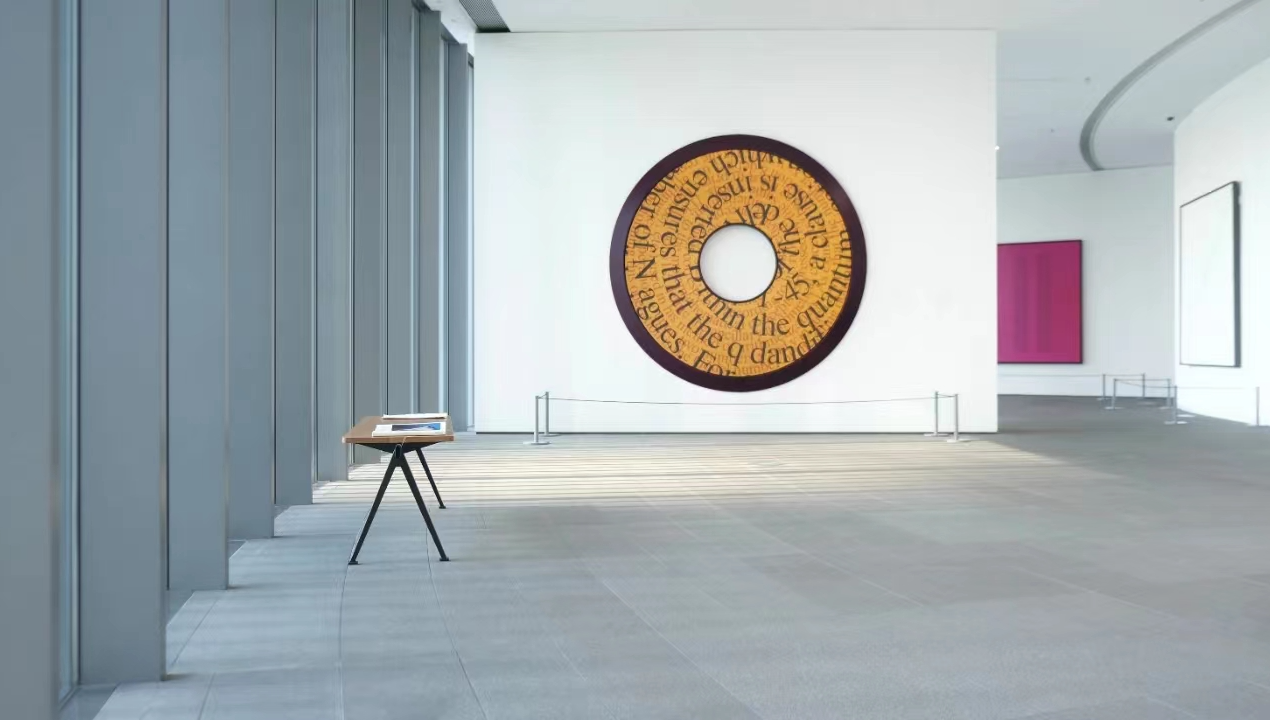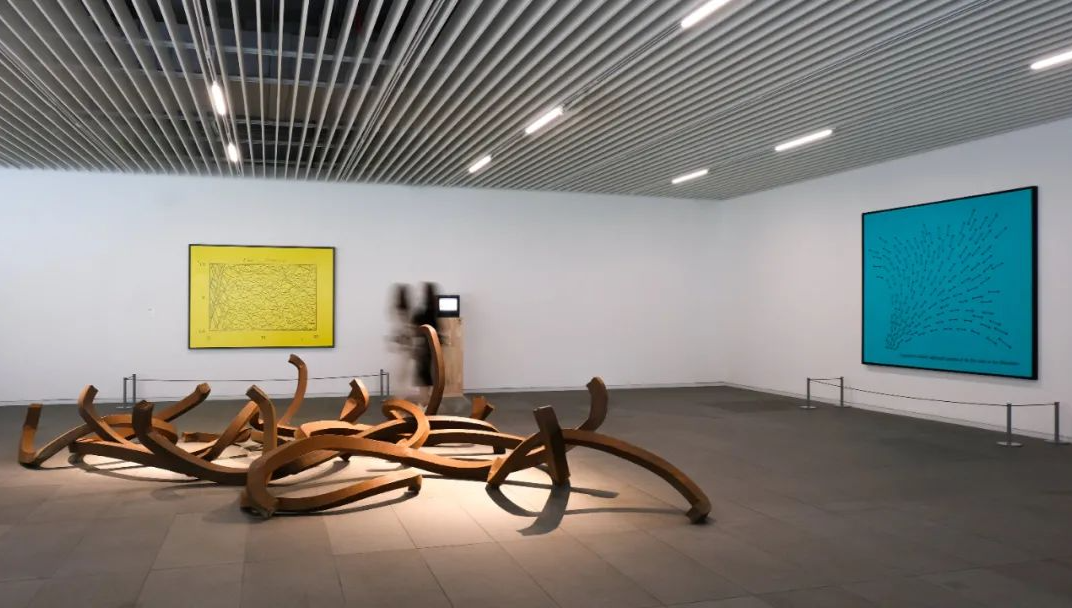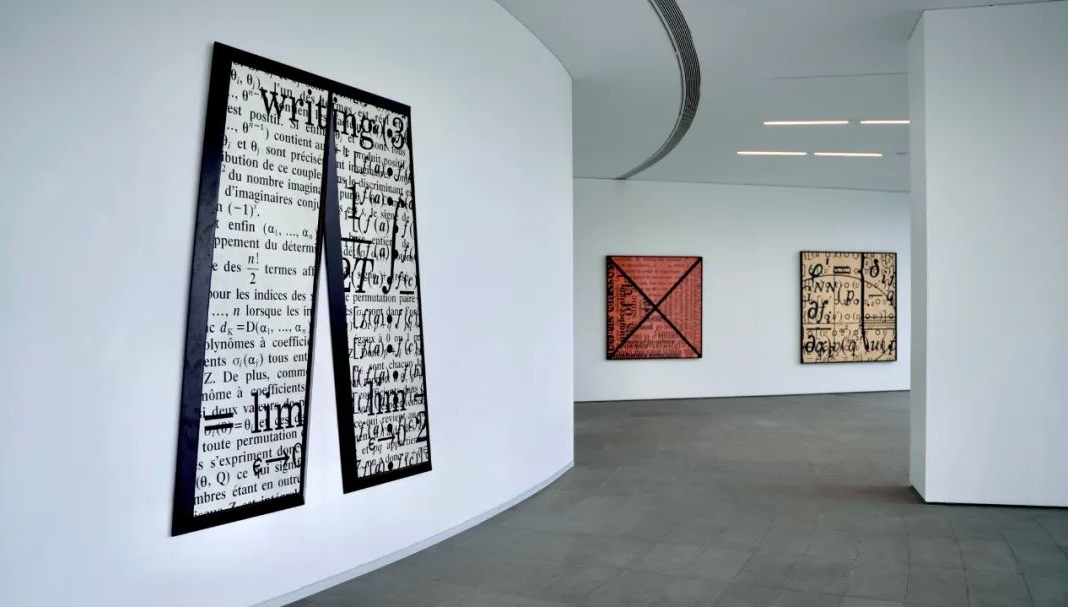Installation
Overview
Mathematics, modes, formulas, symbols, and diagrams, seemingly these words are difficult to associate with art. But these symbols of reason and functionalities are the very material of Bernar Venet's creations, and sometimes even the very purpose of creation.
Since the 1950s, the innovations in philosophical, linguistic and cultural theories continued to stimulate new artistic experiments that pulled modern art away from the aesthetic constraints and toward conceptual art. The word "conceptual" in conceptual art implies both abstraction and thoughtfulness, as well as the existence of the conceptual subjectivity. As a result, the meaning of art is gradually drifting away from the aesthetic gaze on the work itself, but attached to the concept or emotion which is often personal and metaphorical. When the conventional analysis of medium and form fails to work, speculation and interpretation of ideas becomes the only way to enter art.
“To interpret is to impoverish, to deplete the world - in order to set up a shadow world of 'meanings.' It is to turn the world into this world. ('This world'! As if there were any other.)” In 1963, art critic Susan Sontag discussed the consequences of over-interpretation in her essay collection Against Interpretation. This corresponds to another practice initiated by the Minimalists in the 1960s: they stopped giving works and materials any symbolic meaning, rejected psychological metaphors, and took the meaning of art out of the language of the individual to search for a universal language in the public space as the way to reveal the nature of things.
Venet shares this view, believing that personal expression does not offer help to the real world. If art is in the end a personal expression, then what it ultimately leads to is merely the individual psychological emotions, the personal feelings, the personal beliefs, or even a personal view of the universe of the artist. The use of mathematics is Venet's rejection against "expression" and "interpretation". He rejects any ambiguous pictorial metaphors and pursues the singularity of meaning by translating a series of rational mathematical words into diagrams, so that the work can only be read in the mathematical dimension, and no other contexts, whether philosophical, religious or sociological.
In this way, the monosemy of mathematics is introduced into a field in which it could not have been effective. In the face of another language, the established laws of art would fail, for the diagram itself is neither an expression nor of traditional aesthetic. Any attempt to interpretation will end with derided feeling and ultimately fail. As in a game of monosemy, all you have to do is to look at the picture and follow it, and you will finally come to the only exit.
Since the 1950s, the innovations in philosophical, linguistic and cultural theories continued to stimulate new artistic experiments that pulled modern art away from the aesthetic constraints and toward conceptual art. The word "conceptual" in conceptual art implies both abstraction and thoughtfulness, as well as the existence of the conceptual subjectivity. As a result, the meaning of art is gradually drifting away from the aesthetic gaze on the work itself, but attached to the concept or emotion which is often personal and metaphorical. When the conventional analysis of medium and form fails to work, speculation and interpretation of ideas becomes the only way to enter art.
“To interpret is to impoverish, to deplete the world - in order to set up a shadow world of 'meanings.' It is to turn the world into this world. ('This world'! As if there were any other.)” In 1963, art critic Susan Sontag discussed the consequences of over-interpretation in her essay collection Against Interpretation. This corresponds to another practice initiated by the Minimalists in the 1960s: they stopped giving works and materials any symbolic meaning, rejected psychological metaphors, and took the meaning of art out of the language of the individual to search for a universal language in the public space as the way to reveal the nature of things.
Venet shares this view, believing that personal expression does not offer help to the real world. If art is in the end a personal expression, then what it ultimately leads to is merely the individual psychological emotions, the personal feelings, the personal beliefs, or even a personal view of the universe of the artist. The use of mathematics is Venet's rejection against "expression" and "interpretation". He rejects any ambiguous pictorial metaphors and pursues the singularity of meaning by translating a series of rational mathematical words into diagrams, so that the work can only be read in the mathematical dimension, and no other contexts, whether philosophical, religious or sociological.
In this way, the monosemy of mathematics is introduced into a field in which it could not have been effective. In the face of another language, the established laws of art would fail, for the diagram itself is neither an expression nor of traditional aesthetic. Any attempt to interpretation will end with derided feeling and ultimately fail. As in a game of monosemy, all you have to do is to look at the picture and follow it, and you will finally come to the only exit.





